Chimneys
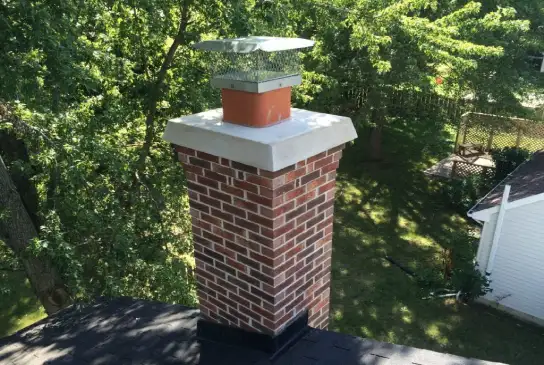
Chimneys
Before enjoying an evening in front of the fireplace it’s important to make sure your chimney is in working order. In order to enjoy the benefits of your fireplace, you need a well maintained chimney. A chimney is a structure, similar to a pipe, that is built into a building and whose primary function is to redirect smoke, fumes and toxic gasses (such as carbon monoxide) from stoves, furnaces and fireplaces.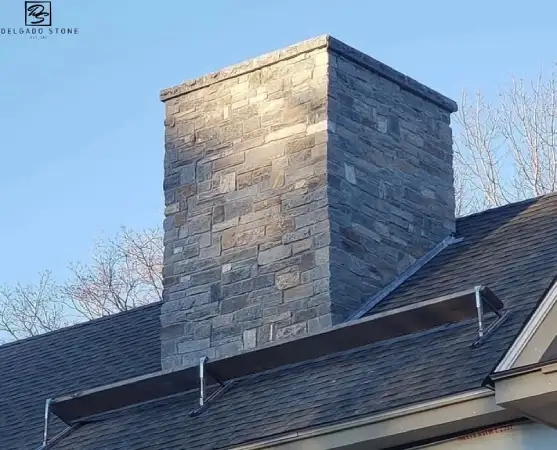
Terminology
Chimneys are built on the premise that hot air rises & cold air falls. Chimneys that are well maintained and properly installed have a strong draft (called the ‘Stack Effect’) that pulls the warm air, smoke and dangerous fumes out of the firebox and up through the chimney. Understanding how your chimney works and the maintenance it requires is an important part of home ownership. Your chimney has various components that help it function properly, and without regular maintenance the risk of fire and safety hazards is increased.Chimney Cap (Crown)
A slab of concrete, stone or metal cap that covers the top layer of brick at the top of the chimney. The chimney cap’s function is to keep debris, nesting materials, animals, leaves etc. from getting inside the chimney. Without a chimney cap, the chimney flue can become blocked and prevent gas and smoke from exiting the home. In addition, chimney caps help prevent water from seeping in through the chimney peak, which can accelerate the chimney’s deterioration. They also prevent sparks from leaving the chimney and landing on the roof.
Many building codes require that homes contain chimney caps and fireplaces built prior to 1950 that do not contain a damper require a chimney cap for draft protection. There are several types of chimney caps:
Electric
Contains a fan that circulates air to increase or decrease the draft. Electric chimney caps are very effective at creating drafts, especially on windy days where it is difficult to keep the fire alive.
Top Mount
The most common type of chimney cap. Top mount chimney caps typically have a mesh screen on homes where the crown is lower than the chimney flue.
Outside Mount
Ideal for masonry chimneys because the cap is mounted directly over the crown, is highly durable and can be customized to fit chimneys of all sizes.
Standard
Standard chimney caps can be used with virtually any chimney or flue. While they offer protection against the weather and pests, they do not provide optimal draft induction.
Integral Damper
Homes built after 1950 do not contain integral damper chimney caps because older chimneys were not built with internal dampers. The damper acts to protect the fire from gusts of wind that can extinguish the fire.
Draft Inducing
A draft inducing chimney cap is raised slightly higher than a standard cap and as the name implies, functions to induce the draft. Draft inducing chimney caps are typically made of stainless steel because of its durability. This type of chimney cap is a great option for homes with flat roofs.
Hurricane (High Wind)
Hurricane chimney caps do not have a wire mesh and are designed to withstand damage from high winds and debris. The walls consist of solid metal for maximum durability. Because there is no mesh, a hurricane chimney cap is less likely to become clogged.
Custom
Many older homes that have non-traditional flues require a customized chimney cap. A customized fit also maximizes the cap’s functionality. Many homeowners opt to also include electric fans and dampers to allow for maximum wind and pest prevention.
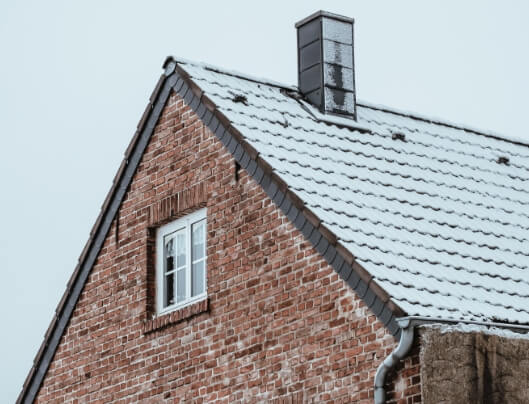
Crown
Built to provide an additional protective layer over the top of the chimney (not the flue opening). The crown can help prevent water from seeping into the chimney and pooling in the firebox which can cause the mortar joints to decay.
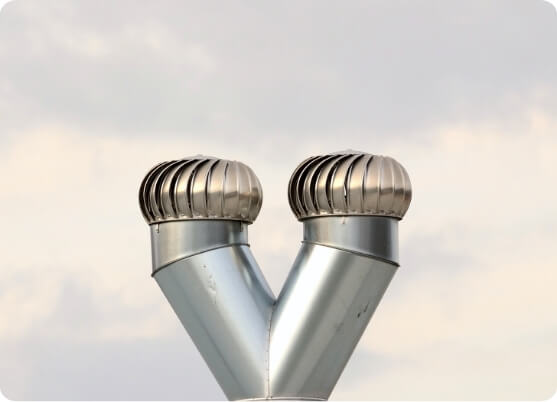
Damper
All chimneys are fitted with a damper - a movable metal plate. When the damper is open, smoke, heat and harmful gasses are able to exit the chimney. When the damper is closed, air cannot get in which acts as an additional layer of protection to keep cold air from entering the home when the fireplace is not in use
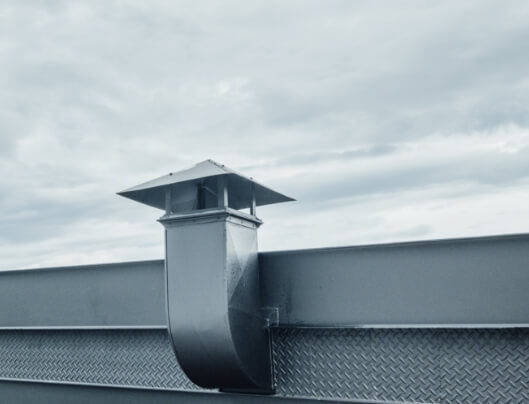
Drafting
When heat rises up, it carries with it smoke and toxic gas. Chimney drafts create airflow and act like a vacuum to suck cooler air out and pull hot air in. This prevents your home from filling with smoke, exhaust and toxic gas (such as carbon monoxide).
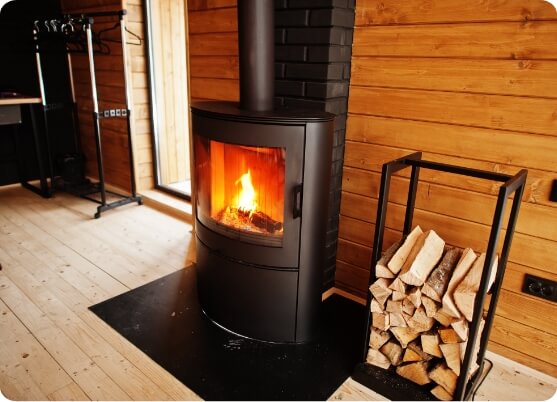
Firebox
The area in the fireplace that holds the actual fire. Because the firebox takes the brunt of the fire’s heat, it is important to ensure that there is no damage resulting from expansion and contraction due to fluctuating temperatures.
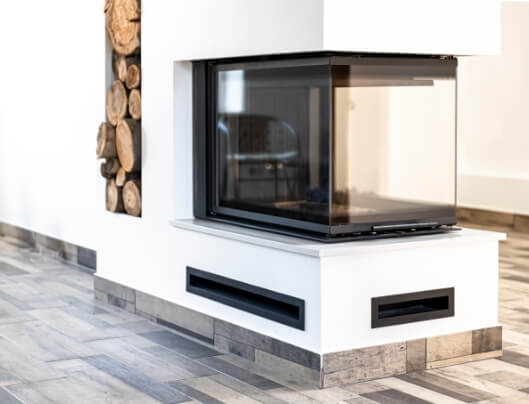
Fireplace Insert
A metal heating appliance that is fitted into an existing masonry fireplace (inside the firebox) and vents out through the chimney or specialized venting system.
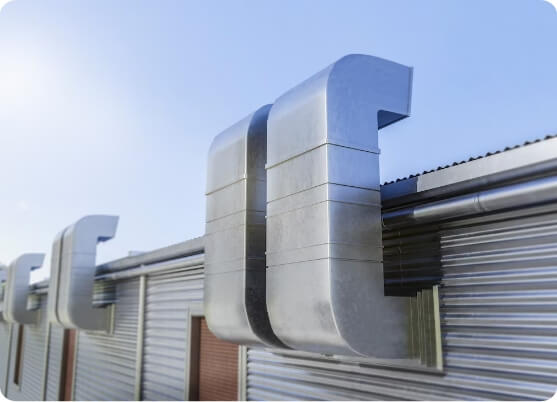
Flue
The air shaft (tunnel) inside the chimney that runs from the firebox up through the roof. The chimney flue helps to expel dangerous gasses and smoke from the home.
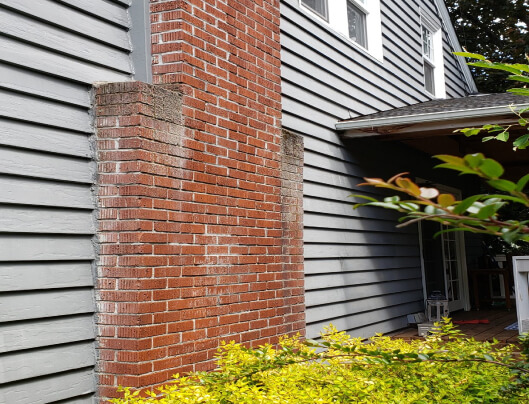
Flue Liner
A liner that is installed in the chimney flue, flue liners play an important role in the safety and performance of a chimney. They make the chimney resistant to corrosion and they prevent items next to the chimney from getting too hot or combusting. In general, there are three types of flue liners:
- Stainless Steel/Aluminum/Metal: Stainless Steel/Aluminum/Metal: Can be installed in chimneys where an old liner exists (typically in older homes).
- Clay Tiles: Commonly used in masonry chimneys, clay tiles are an inexpensive option, but often crack under high temperatures (which must be repaired in order to prevent toxic fumes and smoke from entering the home.
- Custom: The most effective type of flue liner, cast in place liners are installed by applying heat resistant concrete to the chimney walls or an existing flue.
Types of Chimneys
Different home heating appliances and chimney systems usually require different types of maintenance and will have different issues. Regardless of which type of chimney or heating system you have, it is extremely important to have your system professionally inspected every year.

Masonry Chimneys
The most common type of chimney, masonry chimneys, are typically constructed using highly durable materials such as brick, stone, masonry blocks, concrete, cement or a combination layered with a bed of mortar joints. These materials are useful in absorbing warm air which helps to retain heat throughout the home and makes masonry chimneys the top choice for most homeowners.
The weight of materials used to create masonry chimneys, means that they are usually built on-site. Masonry chimneys provide warmth and character to a home and are usually constructed on the smoke chamber which contains a liner and wall that must be at least 4” thick between the liner and the roof.
Pros:
- Durable
- Aesthetic
- Added Home Value
- Long Lasting
- Insulation
Cons:
- High Maintenance
- Expensive
- Requires Additional Roof Space
- Heavy
- Specialized Installation
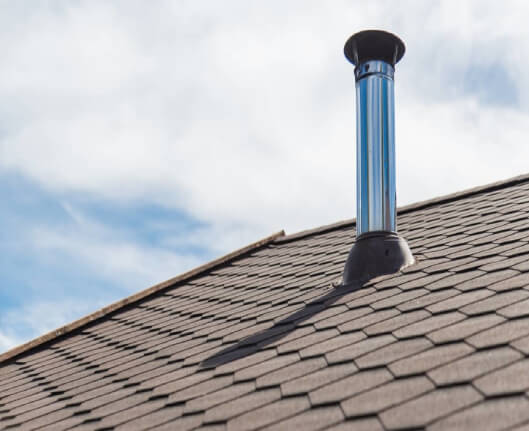
Metal Chimneys
Since metal is a good conductor of heat, metal chimneys are a good option. Metal chimneys must be installed in a fully insulated double or triple walled structure with adequate airflow between the layers.
Pros:
- Durable
- Won’t Corrode/Rust
- Fully Insulated
- Scratch Resistant
- Highly Insulated
Cons:
- Warping (in extreme heat)
- Strict Safety Regulations
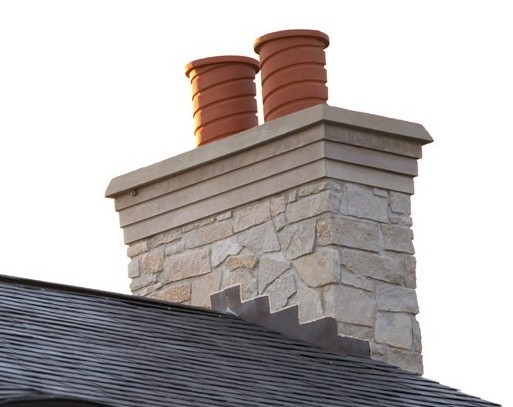
Clay Pot Chimneys
Clay pot chimneys are typically handmade and can be created in virtually any style or design. The chimney is capped by three flue pots made of clay and can be installed on top of an old chimney. Clay pot chimneys serve as an extension to an existing chimney to increase its height and maximize airflow.
Before installing a clay pot chimney, it is important to ensure it is structurally sound and that special attention is given to prevent water leakage from the base. Additional reinforcement may be required for added stability.
Pros:
- Curb Appeal
- Cost Effective
- Easy Maintenance
- Energy Efficiency
- Corrosion and Rust Resistant
Cons:
- Heavy and Difficult to Install
- Fragile
- Susceptible to extreme weather conditions
- May not comply with local building codes
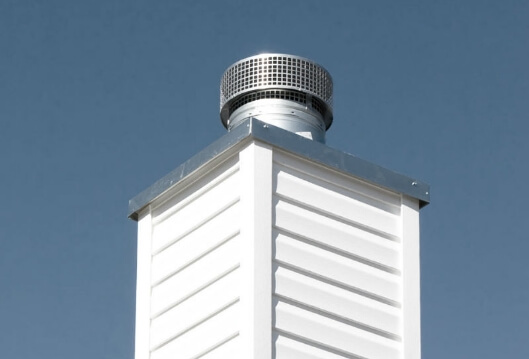
Prefabricated (Prefab) Chimneys
Prefabricated fireplaces come in complete units including the firebox, chimney system and required parts. Because these items are manufactured to work together as a unit, they are meant to be used specifically for each other. Prefabricated chimneys are not nearly as durable as masonry chimneys and are not compatible with all heating appliance systems.
Pros:
- Budget Friendly
- Low Maintenance
- Versatile
- Good Heat Source
Cons:
- Not Durable
- Installation (if not done properly, will most certainly deteriorate faster and create major safety issues/fire hazards)
- Components (are often retired or outdated and cannot be replaced)
- Prone to Drafts
- Nests (many birds prefer to nest in prefabricated chimneys - if not removed the nesting material can either block passageways or combust)
- Smoke (can seep through the pipe and blacken the walls)
Types of Chimney Repairs
Because your chimney’s primary function is to expel dangerous smoke and gasses from your home, it is very important to look for damage. Since the chimney is likely the highest point of your home, it takes the brunt of exposure to the elements.
While chimneys are built for long-term durability, they don’t last forever. The materials used to build chimneys (such as stone, brick and mortar) can deteriorate over time and will need to be replaced or repaired.
Rebuild
Re-Pointing
Skim Coating
Chimney Crown Rebuild
Considerations
There are several important considerations that will impact the way your chimney functions and its overall safety.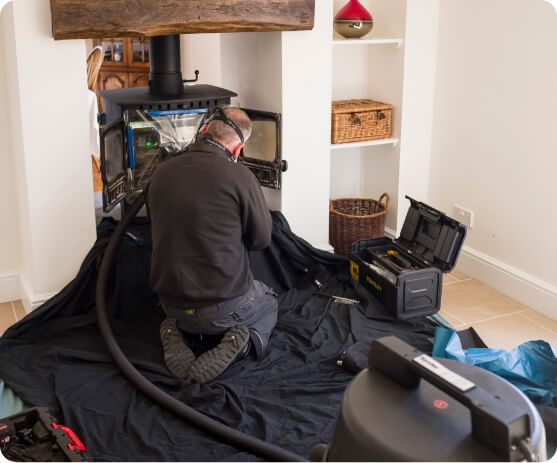
Creosote (Soot)
Creosote is something that should never be ignored. As smoke rises up into the chimney it cools. The Volatile Organic Compounds (VOCs), water and carbon within the smoke can condense and build up over time inside the chimney. The build up creates a black oily residue called creosote.
Even if you have never experienced issues with your chimney, the smallest amount of creosote (as little as ⅛”) can considerably increase a chimney’s fire hazard.
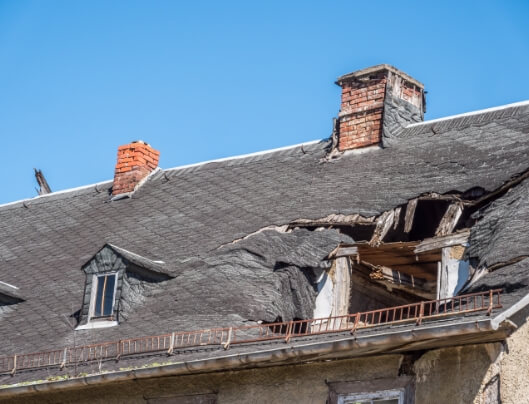
Damage
While masonry structures are very durable, chimneys are constantly exposed to the elements which can eventually lead to damage. Investing in a quality chimney cover and a chimney waterproofing treatment are effective ways to prevent damage, which will inevitably need to be repaired or replaced.
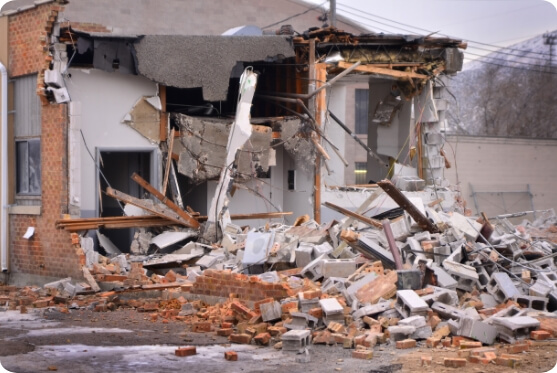
Debris
It is important to ensure that your chimney is free of debris (such as nesting materials) to prevent a fire. It is highly recommended that you hire a certified chimney sweep every year.
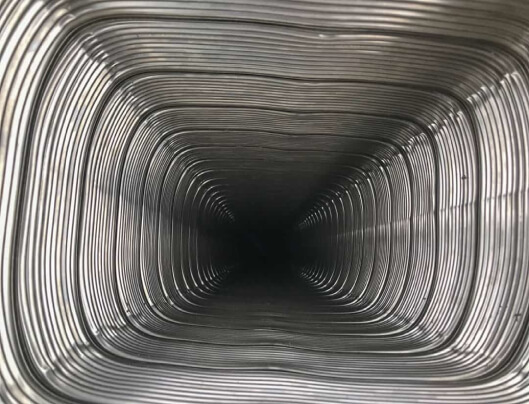
Flue Liner
Masonry fireplaces typically contain chimney liners and they can eventually crack or corrode, making them ineffective. A good way to prevent this is regular maintenance (including inspections and sweepings). Regular inspections can also reveal other damage.
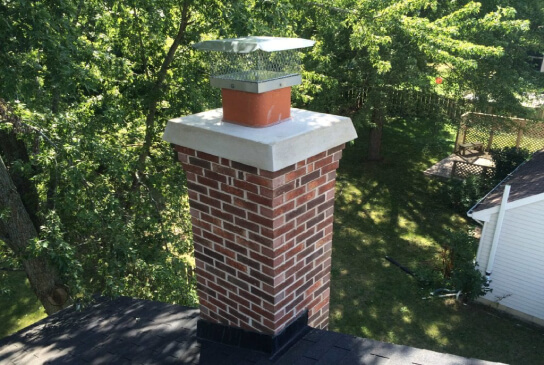
Settling
With time or improper installation, masonry chimneys can shift and crack. This can create a fire hazard, so it’s important to inspect your chimney regularly for any signs of wear.
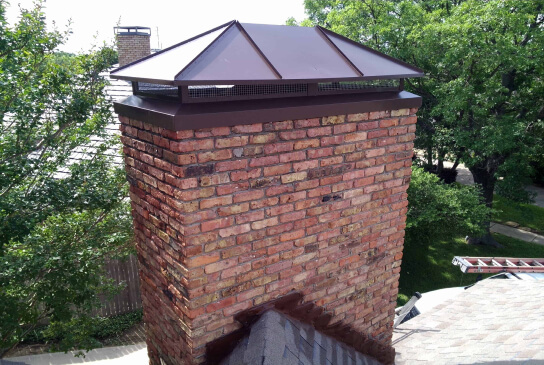
Weight
The weight of the chimney is an important factor because it will need to be installed so the roof can withstand the weight.
Chimneys work best when they are built properly and are well maintained. Your chimney should be inspected once per year to ensure it is not damaged and there are no blockages/obstructions that prevent it from working properly.
If your chimney isn’t working properly, it is very important that you contact a professional, such as Honey Do Men to conduct a thorough inspection so you can be worry free knowing your chimney is working properly and keeping your home and family safe.
TESTIMONIALWhat Our Customers Say About Us
Common Chimney Questions
It's recommended to have your chimney cleaned and inspected at least once a year, especially if you use your fireplace regularly. This helps to remove creosote buildup, which can lead to chimney fires, and ensures that your chimney is in good working condition.
To Schedule A Complimentary Consultation With One Of Our Specialists
Give us a call today.
Contact Us
